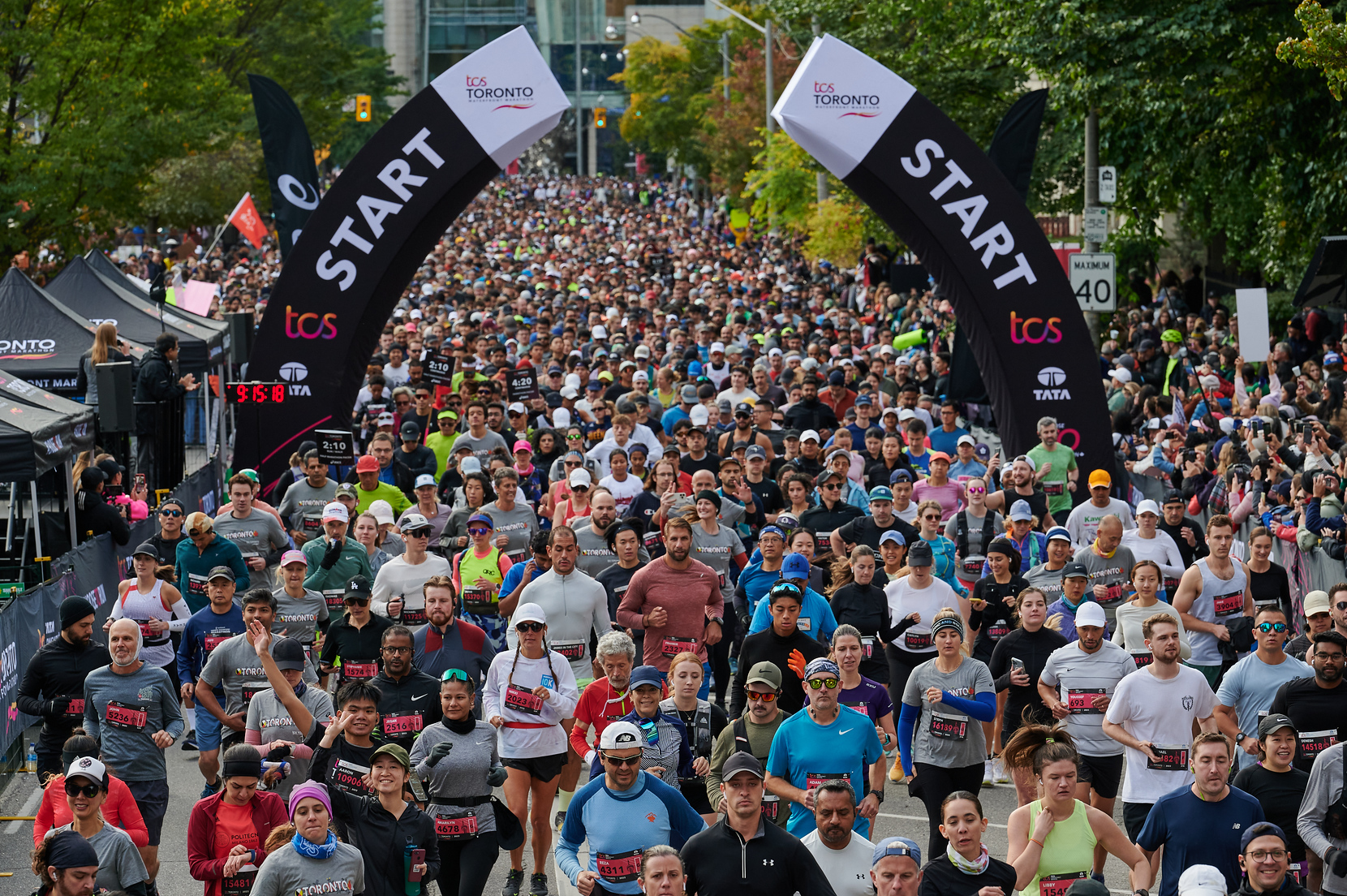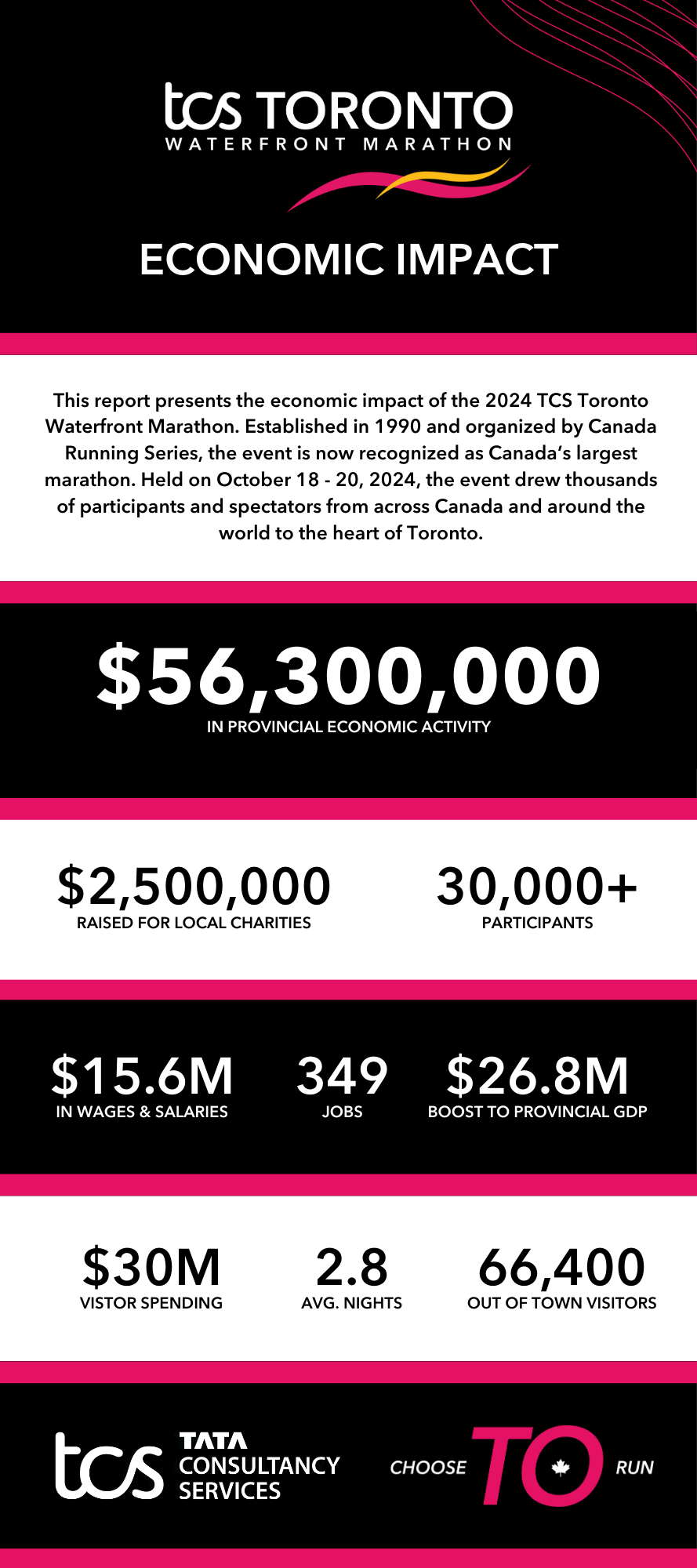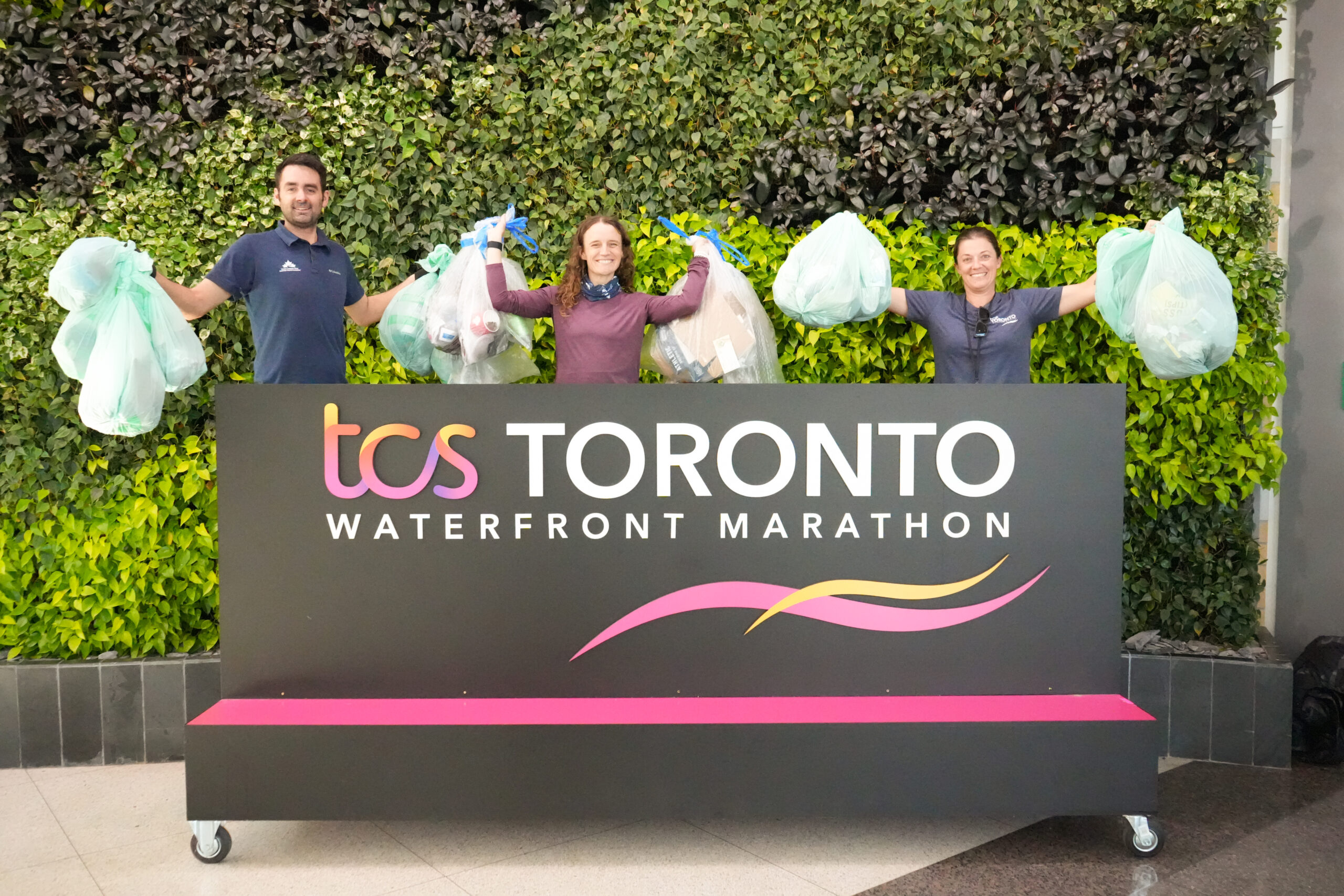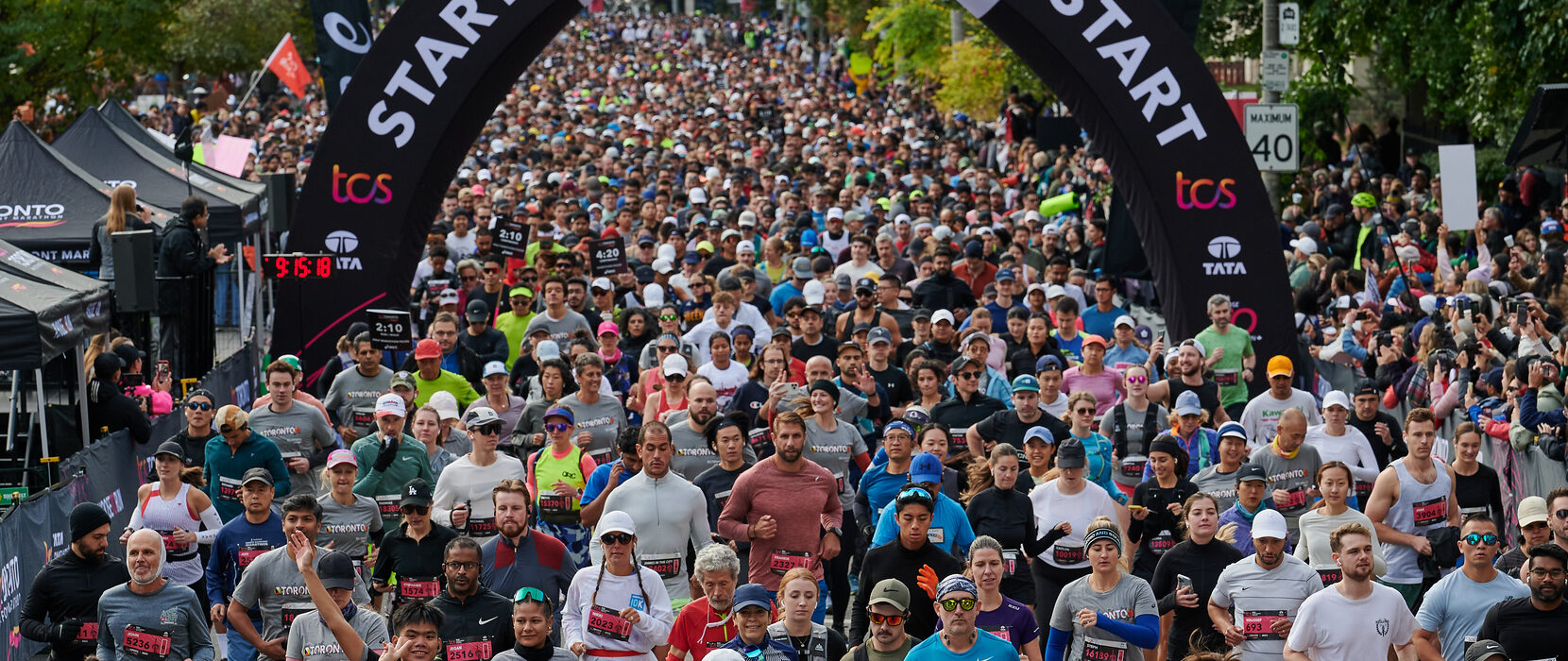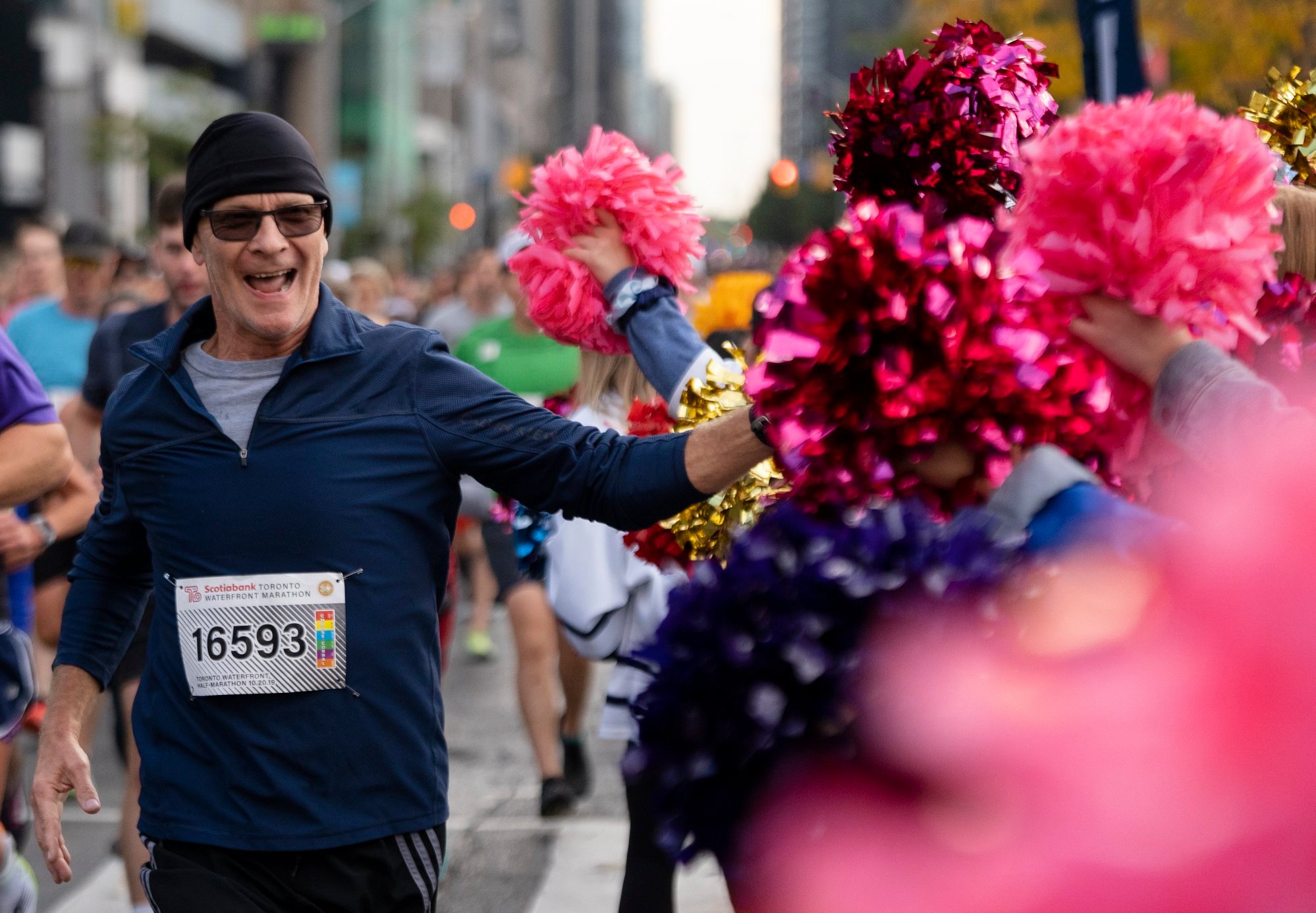
Presented by Mazda. Proud to be the official automotive sponsor of the Scotiabank Toronto Waterfront Marathon.
The Whole Shebang is an event to challenge yourself in a way that you rarely get in a racing season! It involves completing all four Scotiabank Toronto Waterfront Marathon distances:
5K
10K
Half Marathon (21K)
Marathon (42K)
That’s a total of 78.3 kilometres, or roughly the distance between Toronto and Hamilton.
Traditionally, runners choose one, maybe two, race distances in any given event. This year, thanks to virtual races, you have the opportunity to test your limits and do all four. The Whole Shebang is currently sold out, but if you were lucky enough to snag a spot for this event, read on!
How to Schedule Your Races
You’re ready to run all four races. Now, it’s time to actually plan out when to race.
We spoke with Seanna Robinson, founder and principal of RunningWell Inc. – a company that brings health, fitness and personal growth to employees through running coaching and training. Also a coach with high-performance running group the Monarch Athletics Track Club, and founder and active member of the Lower East Siders running group, Robinson suggests not to race all four as all-out efforts.
Scheduling
Generally speaking, you want to space out longer runs, whether it’s in racing or in training. For the Whole Shebang, you want to maximize the time between the half -marathon and marathon. More time between races means longer recovery.
Specifically, Robinson recommends to run the 10K first, and to use it as a training run.
“Add in a good quantity of km’s beforehand and after, as this will also double as your longest training run before the marathon (probably in the 30K + range). Approach it as a long run with a 10K tempo built in. The following week you could do the half -marathon. I would use this as a B-goal race. Provided you’ve done good marathon training mileage leading up to it, you should be able to run it fairly hard and recover within the next few weeks before the marathon. Given you’ve just done your biggest long run the weekend before, you won’t be optimally tapered, so just use it as a good hard effort and you might surprise yourself.”
She adds, the half marathon “will also be a good fitness indicator before the marathon so you’ll have a better sense of how to pace yourself. Use the next two weeks to taper and recover as fully as you can before the marathon. Throw the 5K in the weekend before as a sharpening effort – I would do this one at goal marathon race pace with about 10K ‘warm-up.’ Then taper on in and have an awesome marathon.”
Sample schedule:
Oct. 1-4: 10K
Oct. 5-11: Half marathon
Oct. 12-18: Rest
Oct. 18-25: 5K
Oct. 26-31: Marathon
How To Prepare For The Whole Shebang
In terms of preparation, Robinson says that your training should be geared towards the marathon—since there’s no faking the distance.
She says, “The best thing people can do to specifically prepare for running hard four times in a month is to carry in a lot of base for strength.” This is because strength will allow you to recover better between hard efforts.
The last, and final piece of preparation is planning out your routes. After that, all that’s left is to put your fitness to the test. in terms of recovery, eat and sleep as much as you can, Robinson says. This will be a taxing month on your body and you’ll have to support it with more nutrition and more hours of sleep.
Presented by Mazda. Proud to be the official automotive sponsor of the Scotiabank Toronto Waterfront Marathon.

